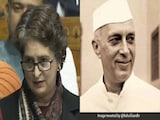Just after this year's Diwali celebrations, the skies of the Delhi-NCR region filled with a thick, menacing haze. According to IQAir, New Delhi's Air Quality Index (AQI) soared to 442 right after Diwali, making it the world's most polluted major city at the time. On many monitoring stations, PM2.5 levels were more than 59 times the World Health Organization (WHO) recommended annual guideline. Real-time data also show PM2.5 readings above 230 ug/m3 and PM10 near 300-350 ug/m3, both far exceeding safe limits. In such conditions, the haze isn't just visible, it's breathing danger.
But what exactly is in this haze? Why does it matter? And how does each pollutant impact your health? From fine particles that slip deep into membranes to gases that sting airways, the mix of pollutants in Delhi's winter smog is complex. Let's decode the major pollutants, starting with particulate matter, and understand the health risks they carry.
1. Fine Particulate Matter - PM2.5
Particulate matter with aerodynamic diameter equal to or less than 2.5 microns (PM2.5) is among the most dangerous air pollutants. Because these particles are extremely small, they penetrate deep into the lungs, enter the bloodstream and trigger inflammation.
A recent review found that each 10 ug/m3 rise in annual PM2.5 in India is associated with an 8.6% increase in mortality. The Air Quality Life Index estimates that in Delhi's worst-polluted areas, life expectancy is shortened by up to 11.9 years due to fine particulate exposure. In simpler terms, when the air is thick with PM2.5, it's not just uncomfortable, it's deadly.
Health impacts of PM2.5:
- Worsened asthma and COPD
- Increased heart attacks and strokes
- Impaired lung development in children
- Higher risk of diabetes
- Cognitive decline
2. Coarse Particulate Matter - PM10
Larger in size (less than or equal to 10um) PM10 particles may not lodge as deeply as PM2.5, but they still irritate airways, trigger coughs, and reduce lung function, especially in vulnerable people. In Delhi, PM10 during smog episodes has shot above 300 ug/m3. Studies found that in Delhi the prevalence of hypertension was 36% in areas with higher PM10 levels versus 9.5% in less-polluted areas.
3. Nitrogen Dioxide - NO2
This gas, primarily from vehicle exhaust and industrial emissions, irritates airways and increases sensitivity to allergens. NO2 levels in Delhi routinely exceed WHO limits and play a co-role in forming ozone and secondary particulates. Health risks include higher rates of asthma in children, lung-function decline, and increased susceptibility to respiratory infections.
4. Sulfur Dioxide - SO2 and Carbon Monoxide - CO
Although less visible than particulates, SO2 (from coal-fired plants, industry) and CO (from incomplete combustion) also pose health hazards. SO2 irritates mucous membranes and worsens bronchitis, while CO reduces oxygen-carrying capacity of blood, placing strain on the heart. Both pollutants are especially risky for older adults and people with heart disease.
5. Ozone - O3 and Secondary Pollutants
Ground-level ozone forms when NOx and VOCs react in sunlight. While ozone concentrations may dip during heavy smog or low sunlight, they spike during sunny winter afternoons. Ozone can cause chest tightness, airway inflammation and reduced athletic performance. Secondary aerosols formed via chemical reactions further add to the particulate burden.
Why Delhi-NCR Gets So Bad During Winter Months
Several overlapping reasons drive the seasonal haze that starts around Diwali and end around January end in Delhi-NCR:
- Crop-residue burning in neighbouring states (Punjab, Haryana) adds huge smoke load.
- Stagnant weather and temperature inversions trap pollutants near ground level.
- Vehicle, industry and construction dust mix for regional-local emissions.
- Firecracker use during Diwali adds a dramatic pollution spike.
Delhi-NCR and North India's haze isn't just smog by name, it's a toxic cocktail of fine particulates, gases and chemical reactions that assault lungs, hearts and brains. PM2.5 stands out as the greatest danger, but it acts alongside coarser particles and gases in a cumulative assault. The data is stark: millions of deaths in India are linked to particulate pollution. The solution isn't merely wearing a mask or staying indoors, though both help. It is also about understanding the enemy, specifically what the pollutants are, how they attack, and why your city becomes especially vulnerable in winter. Only then can we act with both urgency and precision to protect health, especially for children, the elderly and the chronically ill.
Disclaimer: This content including advice provides generic information only. It is in no way a substitute for a qualified medical opinion. Always consult a specialist or your doctor for more information. NDTV does not claim responsibility for this information.














